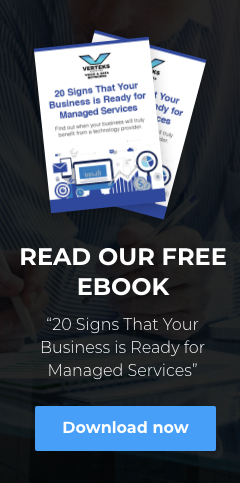Organizations adopt Microsoft 365 for a wide variety of reasons. Some seek to take advantage of Microsoft Teams for collaboration and to access applications and data from anywhere. Others may be looking to consolidate redundant services and take advantage of a proven platform for file sharing and storage. Of course, M365 has all the familiar Microsoft productivity tools in an open, consumption-based subscription model that can scale up or down as needed.
M365 can fulfill all of these needs, but few organizations capture all of its value. In many cases, users barely scratch the surface of what M365 can do, losing out on capabilities that can make them more effective and efficient.
Fact is, M365 adoption is a complex process that few organizations have the skills to navigate. It pays to partner with a managed services provider (MSP) with specific expertise in Microsoft solutions to help maximize the potential of this powerful platform. Qualified MSPs will follow these four steps to ensure successful adoption.
Step 1: Needs Analysis
The MSP will start with a needs analysis to determine which M365 applications, features and capabilities best suit the organization’s operational processes. The requirements will likely vary between different departments, users and roles. Power users may need the full suite of M365 applications, while others may only use Teams and email.
The needs analysis will enable the MSP to tailor the M365 subscription, optimizing costs while ensuring that users have the tools they need to do their jobs. It will also provide the MSP with ideas on how to configure M365 to maximize user adoption and increase its value to users.
Step 2: Licensing
Microsoft offers four different license plans for businesses, from an apps-only solution to a comprehensive suite that includes robust security tools. At the enterprise level, there are two license plans with the option to add Teams separately. M365 Copilot, Microsoft’s AI tool, is a separate add-on at this time.
The MSP can assign different license plans to different users based on their specific needs. The MSP can also help determine if Microsoft Copilot would be valuable and address potential security and compliance concerns.
Step 3: Configuration and Migration
The secure use of M365 depends on the development and configuration of a robust user identity infrastructure. Administrators must determine which users should have access to what resources, applying least privilege access principles to reduce the risk that an account takeover could lead to a widespread security breach.
File storage and sharing should be configured to enable easy access to authorized users while reducing the risk of data leakage. Similarly, Microsoft Teams must be configured to streamline collaboration while reducing the risk of a security breach.
Migrating an existing email platform to Exchange Mail is a complex process that’s best left to the professionals. The MSP can set up and configure the environment and determine the best option for migrating email data.
Step. 4: Ongoing Management
Effective management is critical to maximizing the value of M365. The MSP can help ensure that M365 is being fully utilized to avoid paying for unused or unneeded services. Similarly, the MSP can review licenses and access levels periodically to ensure that users have the tools and resources they need to do their jobs.
The MSP will also ensure that M365 services are patched and kept up to date against the latest threats. Ongoing monitoring and reviews of security controls help to identify gaps that could leave the M365 environment open to attack.
Choosing the Right MSP
Many MSPs offer M365 licenses, but not all can assist with M365 adoption from end to end. Verteks is a longtime Microsoft partner with extensive experience in the design, configuration, migration and management of M365 solutions. We’re here to help ensure a smooth adoption process that helps you get the most from M365.




